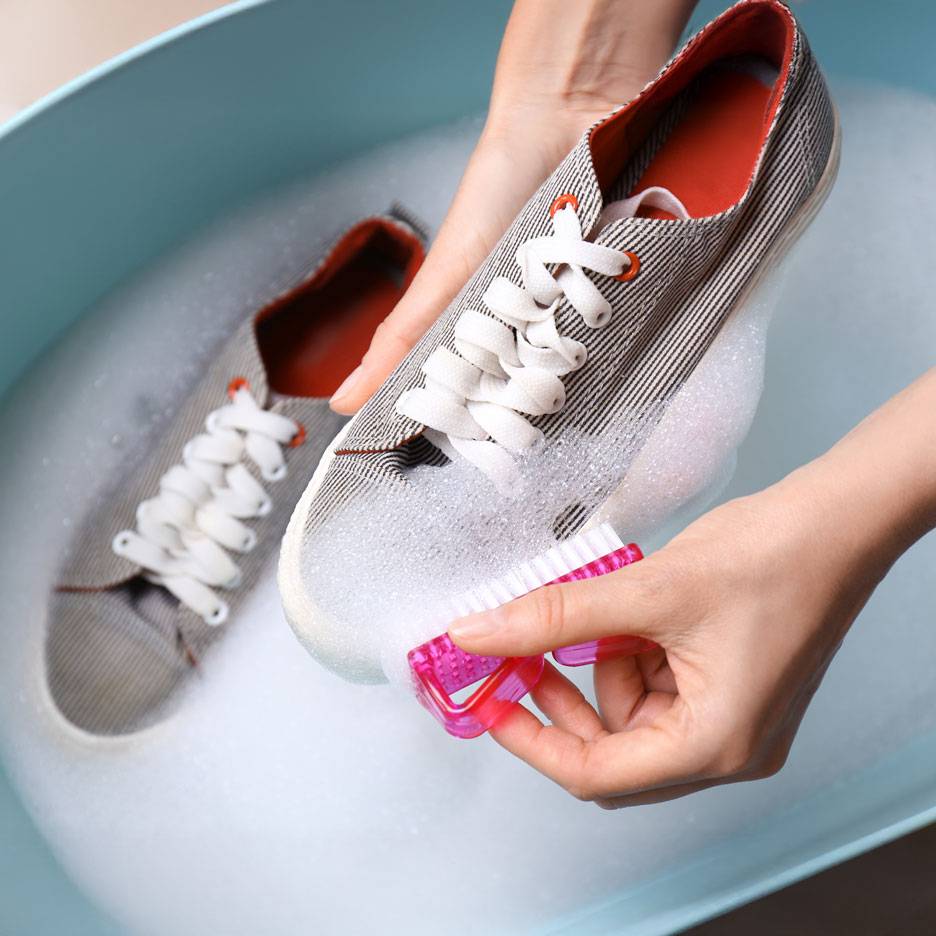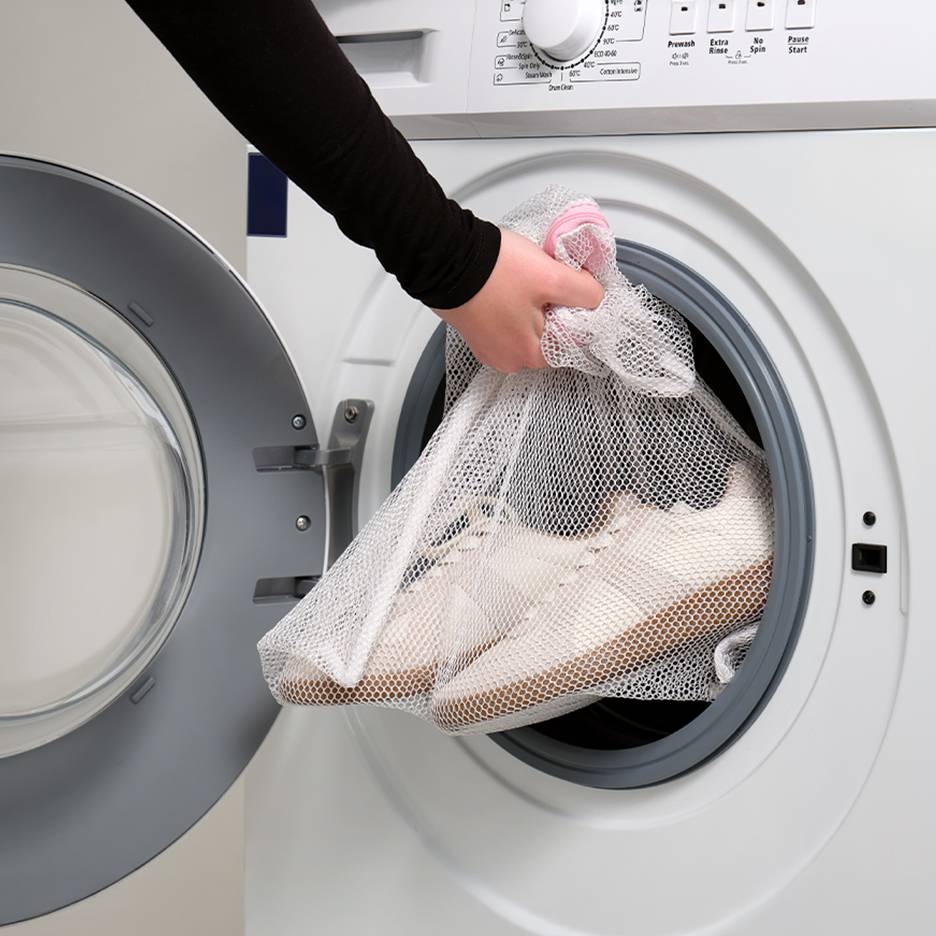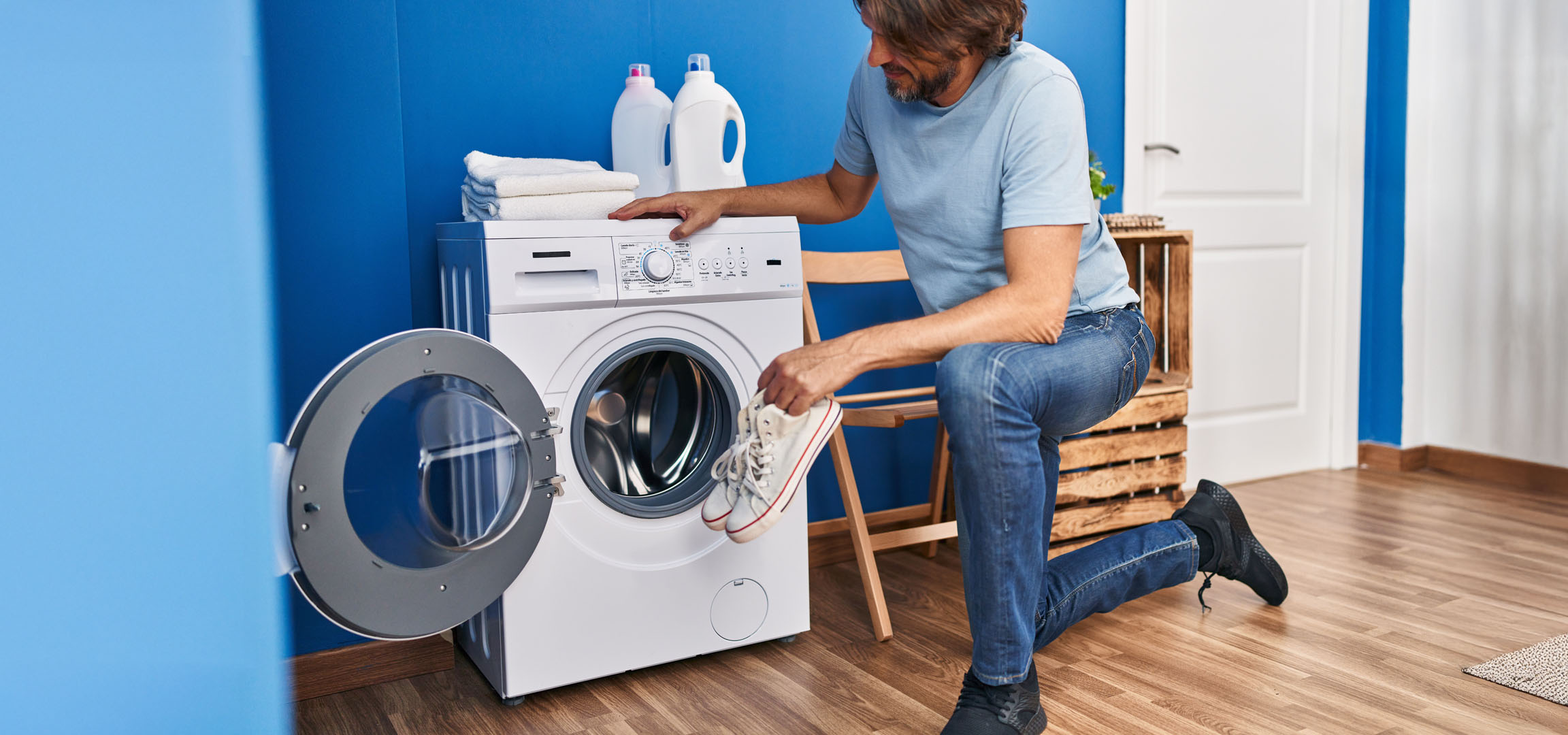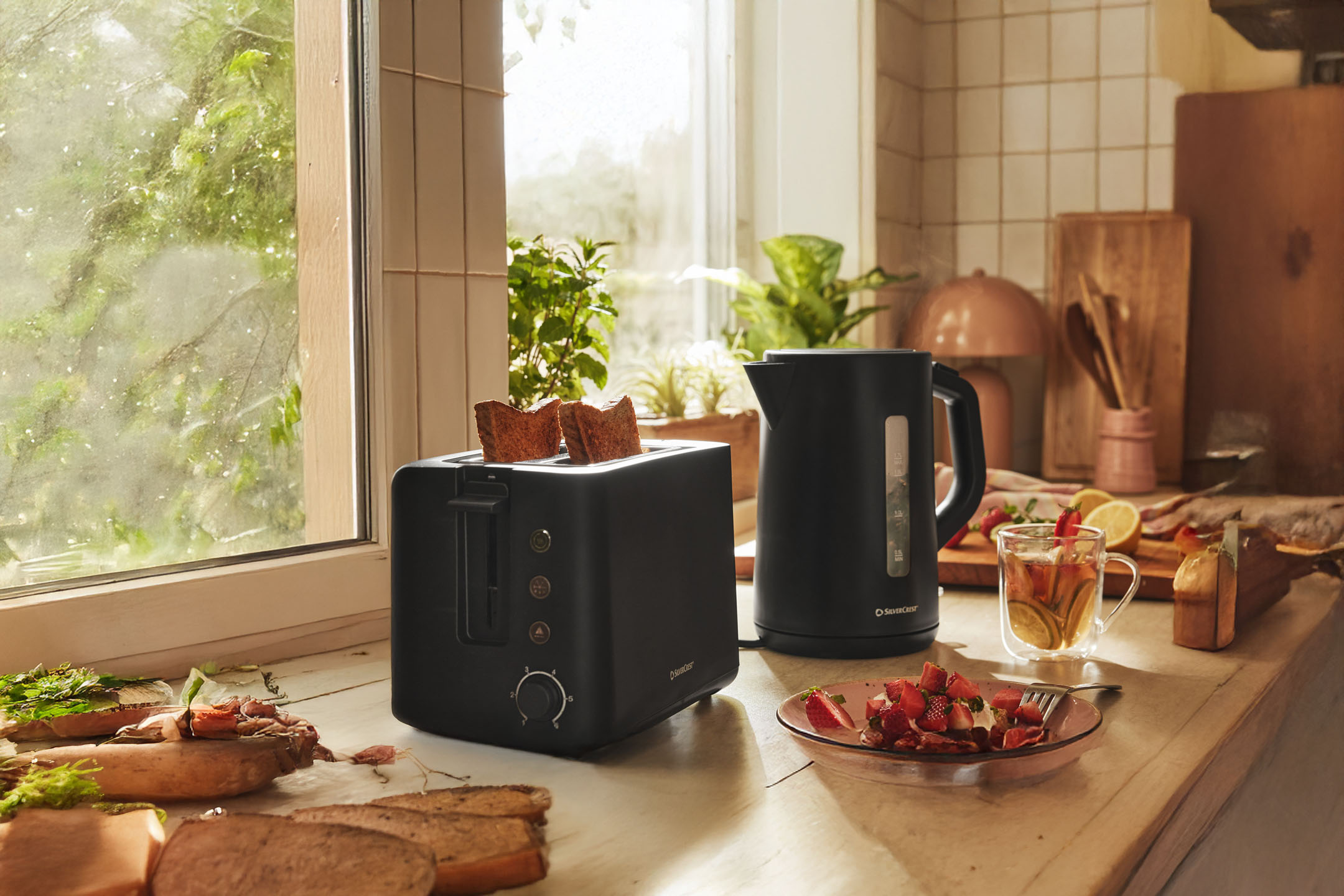They look like new! How to machine wash your shoes
Favourite shoes are often worn every day and put through a lot of wear and tear. However, street dirt, water stains and other marks can significantly reduce the enjoyment of your shoes over time. Not only do they spoil the look, but in the worst case, they can even damage the quality in the long term. It is therefore advisable to clean your shoes regularly. But what should you do if the shoes can no longer be cleaned with a shoe brush and a cloth or if the odour of the sports shoes becomes too strong? This guide shows whether, how and at how many degrees shoes can be machine washed in this case.
Can I wash shoes in the washing machine?
To remove stubborn dirt, stains and unpleasant odours from shoes, a wash cycle in the washing machine seems appealing. Most manufacturers advise against washing shoes in the machine. The high temperatures and moisture can cause adhesives to loosen, seams to swell or soles to disintegrate. Washing shoes in the washing machine is therefore always at your own risk. In general, shoes made of fabric and synthetic materials can be machine washed without falling apart immediately.
Shoe Model | Suitable for the Washing Machine | Special Considerations |
|---|---|---|
High Heels | No | Heels can break off and/or damage the machine. |
Leather Shoes | No | Leather can become brittle and warp. |
Athletic Shoes | Yes | Athletic shoes with cushioning in the sole should not be machine-washed |
Fabric Shoes | Yes | Shoes with metal applications like studs must not be put in the machine. |
Sneakers/Trainers | Yes | Shoes with metal applications like studs must not be put in the machine. |
Hand washing as an alternative
If you don't dare to put your shoes in the machine, you can also try washing them by hand. This is gentler and can be cancelled immediately if the material reacts undesirably.
Six tips for washing trainers in the machine
Gym shoes are particularly suitable for machine washing as they are usually made from durable synthetic fibres and have a robust finish. If airing and brushing are no longer sufficient to remove odours and dirt, you can try washing these shoes in the machine, but a few basic rules should be observed to ensure that the shoe is not damaged during machine washing.

Tip 1: Select the wash programme and temperature carefully
When washing trainers, you should select the gentlest possible wash cycle at a low wash temperature. 30 °C is completely sufficient and prevents adhesives from loosening or the shoe from shrinking. A delicate or gentle wash cycle and the wool wash cycle are suitable washing programmes. These are particularly gentle on the material. The spin cycle should also be minimised and the lowest spin speed selected.

Tip 2: Use the right detergent
A heavy-duty or mild detergent is the right choice for gently cleaning shoes. If the shoes are made of white fabric, a white detergent can also be used to make the colour shine even brighter. When dosing the detergent, the motto is: less is more. Fabric softener should not be used when washing trainers in the machine: fabric softener can damage the fabric and especially the areas where glue has been used, thus ruining the shoe.

Tip 3: Prepare shoes correctly
Before the shoes go into the machine for washing, a few preparations need to be made. Laces, insoles and all other loose elements must be removed beforehand. Remove coarse dirt from the surface and sole with a shoe brush or toothbrush or wipe it off with a damp cloth so that it does not collect in the washing machine and soil it or clog the hoses. To protect the shoes, they can be packed in a garment bag or pillowcase. This also makes it easy to wash the removed laces.

Tip 4: Load the machine carefully
Shoes should never be put in the washing machine on their own. The fast rotations cause the shoes to hit the inside of the drum and can create an imbalance and damage the machine. Towels and bed sheets, for example, are well suited as companions for shoes in the washing machine. If the shoes are in the garment bag, there is no need to worry about the other items of laundry being damaged.

Tip 5: Dry shoes properly
Once the shoes have survived the washing machine undamaged, they need to be dried properly. This is the only way to ensure that they retain their shape and do not develop mould stains or similar. Avoid exposing them to direct heat from a heater or hair dryer. Instead, the trainers should ideally be dried at room temperature. To avoid deformation, a shoe tree or newspaper can be inserted into the shoe. Newspaper also has the advantage of absorbing water, which speeds up the drying process. If possible, shoes should not be put in the tumble dryer.

Tip 6: Impregnate after washing
If the shoes have been impregnated, the protection must be renewed after washing. The waterproofing is waterproof, but only at cold temperatures and up to a certain amount of water. Waterproofing also helps to minimise future soiling and stains. However, the waterproofing spray should only be applied once the shoe is completely dry.
Proper shoe care
In general, shoes should be well cared for so that they last a long time and look good. Dirt, mud and the like should be removed as soon as possible after wearing them, before the dirt settles in the fibres. Regular airing and alternating between different shoes helps to minimise odours. Shoe polish keeps the material soft so that it does not become brittle and dirt cannot settle in the creases.
White shoes are yellow after washing: what can I do?
If the formerly white shoes have an undesirable yellow tinge after washing, this is usually due to the glue that has come loose and stuck to the fabric. This is why special care is required when washing white trainers. A mixture of baking soda and washing-up liquid can help to remove the yellow colour from the shoe: a 1:1 mixture is applied to the shoe with a toothbrush and removed with a damp cloth after a short exposure time. This household remedy can often remove a slight yellow tinge.

